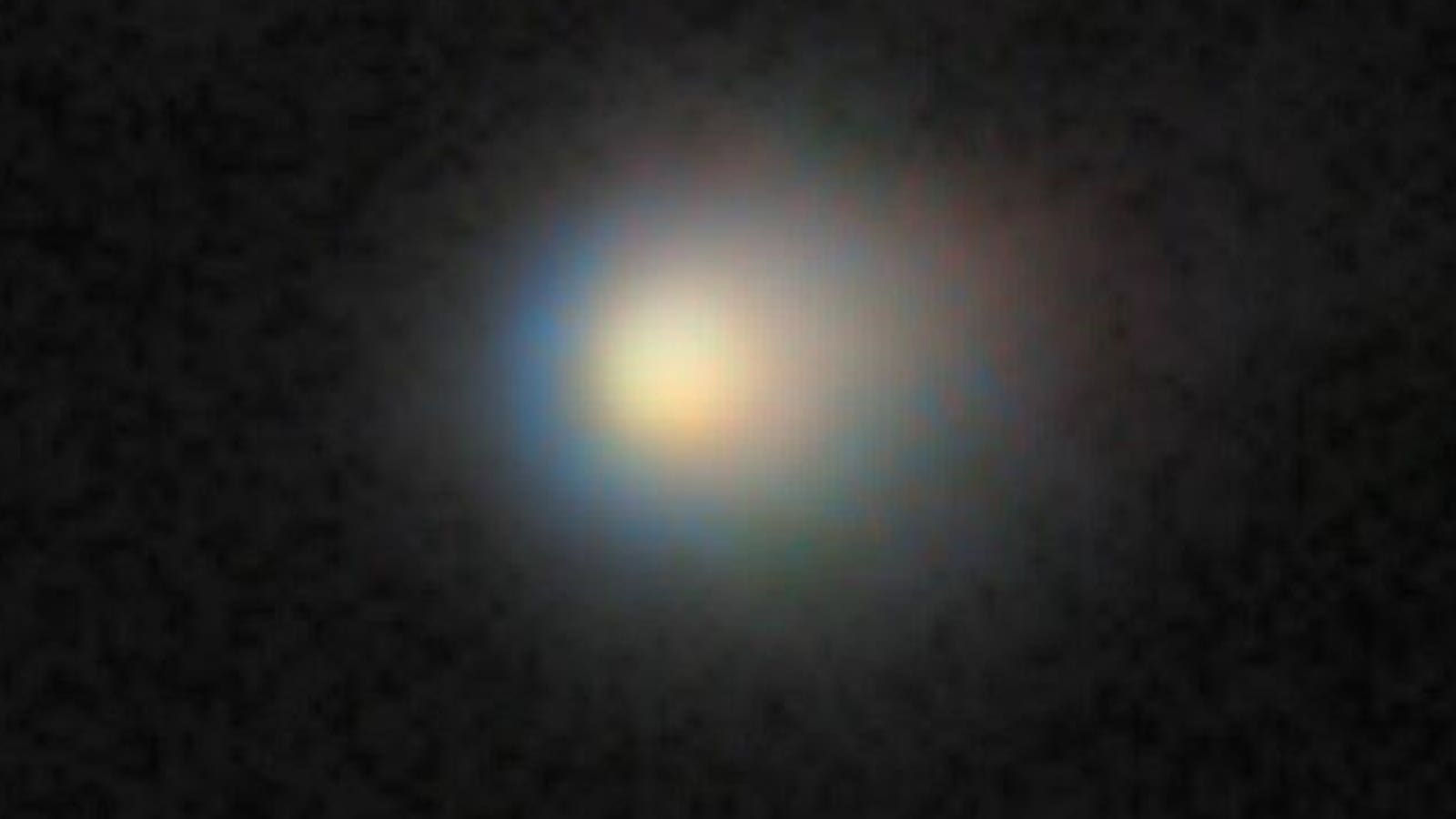Comet 3I/ATLAS is captured in this image by the Gemini North telescope. The incredible sensitivity … More
An object believed to be both from another star system and the oldest comet ever observed has been imaged by a massive telescope on a volcano in Hawaii.
The Gemini North telescope on Maunakea, Hawaii, captured a detailed image of the ancient comet — called both 3I/ATLAS and C/2025 N1 (ATLAS) — as astronomers rush to study a celestial body formed in a distant star system.
What The New Images Of 3I/ATLAS / C/2025 N1 (ATLAS) Show
Its observations suggest that the object has a tail and a nucleus, confirming that it’s a comet. Gemini North’s Multi-Object Spectrograph also reveals the comet’s compact coma — a cloud of gas and dust surrounding its icy nucleus.
“The sensitivity and scheduling agility of the International Gemini Observatory has provided critical early characterization of this interstellar wanderer,” said Martin Still, NSF program director for the International Gemini Observatory. “We look forward to a bounty of new data and insights as this object warms itself on sunlight before continuing its cold, dark journey between the stars.”
Comet 3I/ATLAS streaks across a dense star field in this image captured by the Gemini North … More
Why 3I/ATLAS / C/2025 N1 (ATLAS) Is So Special
What makes this object stand out from every other object astronomers can see in the solar system is its trajectory, size, and speed. 3I/ATLAS’s eccentric trajectory suggests that it’s from outside the solar system, while preliminary data indicate that it’s around 12 miles (20 kilometers) in diameter. That’s much larger than the two previous interstellar objects, ‘Oumuamua in 2017 and comet 2I/Borisov in 2019. It is moving at an exceptionally high speed, traveling at almost 25,000 kilometers (15,500 miles) per hour.
How Big Is 3I/ATLAS / C/2025 N1 (ATLAS)?
The third interstellar object ever to be found after ‘Oumuamua in 2017 and a comet called 2I/Borisov in 2019, 3I/ATLAS could be three billion years older than the solar system — the oldest comet ever seen. By comparison, ʻOumuamua measured roughly 200 meters, and Borisov less than a kilometer.
It may be the oldest comet ever observed, at approximately three billion years older than the solar system (which is 4.6 billion years old) and possibly as old as 14 billion years. However, its exact age remains unknown.
This animation shows the observations of comet 3I/ATLAS when it was discovered on July 1, 2025. The … More
Where Is 3I/ATLAS / C/2025 N1 (ATLAS)?
The third known interstellar object to visit our solar system, the object was first detected on July 1 by the El Sauce Observatory in Chile, part of the global Asteroid Terrestrial-impact Last Alert System. It’s currently within Jupiter’s orbit at a distance of about 465 million kilometers (290 million miles) from Earth and 600 million kilometers (370 million miles) from the sun.
What Will Happen To 3I/ATLAS / C/2025 N1 (ATLAS)?
It will come closest to the sun on Oct. 30 at a distance of 210 million kilometers (130 million miles) and 270 million kilometers (170 million miles) from Earth on Dec. 19. However, at no point will it threaten Earth or be visible to the naked eye.
The new Vera C. Rubin Observatory in Chile — which unveiled its first images last month and has a unique view of the night sky supported by the world’s largest camera — is expected to find about 50 more interstellar objects like 3I/ATLAS / C/2025 N1 (ATLAS).
Wishing you clear skies and wide eyes.
